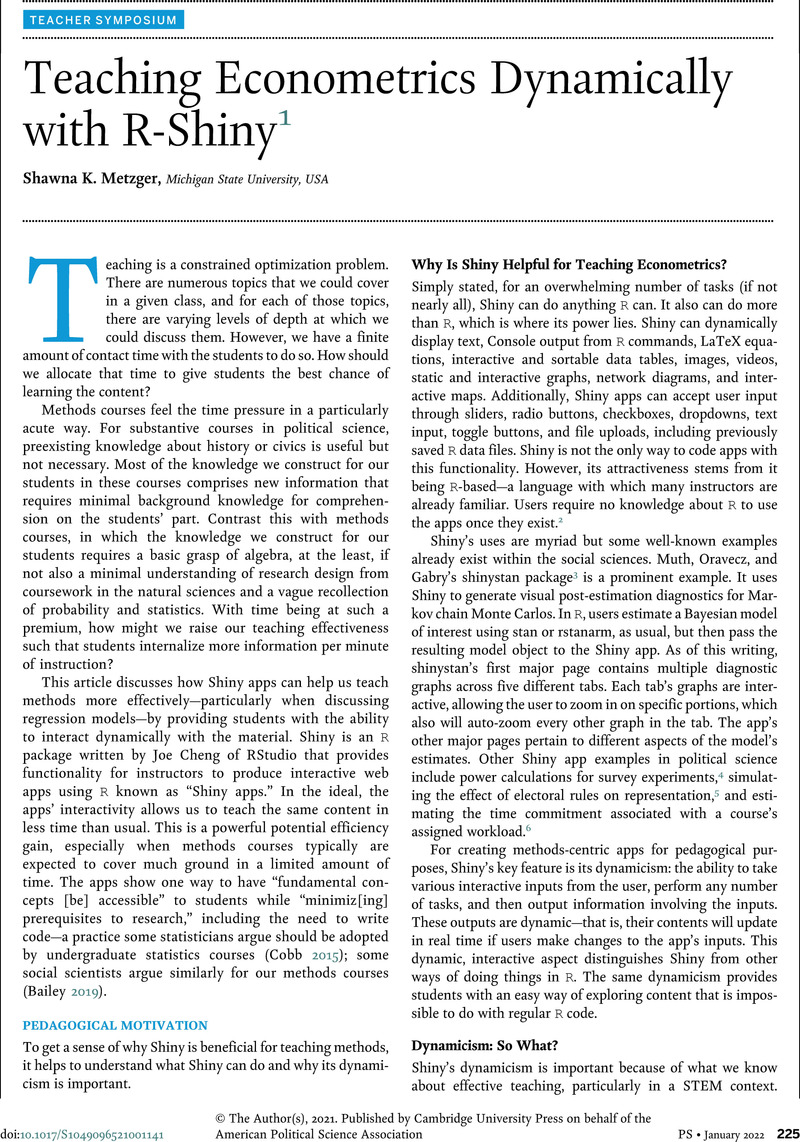No CrossRef data available.
Published online by Cambridge University Press: 21 December 2021

Portions of this article draw on Metzger’s (2021) Using Shiny to Teach Econometric Methods and are reprinted with permission. All of the apps mentioned in the article are available on GitHub (www.github.com/MetzgerSK) in either the shinyElement or shinyAdvReg repository.